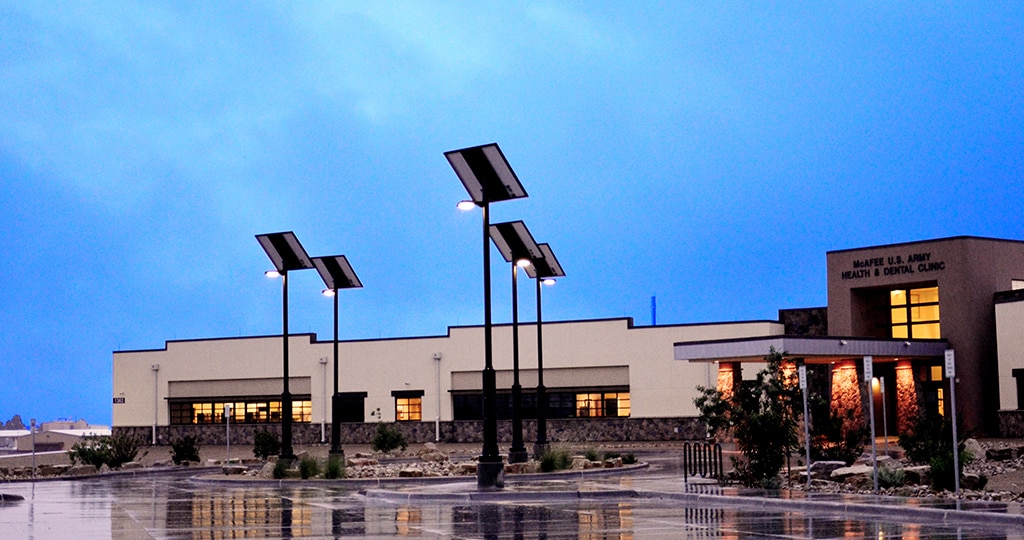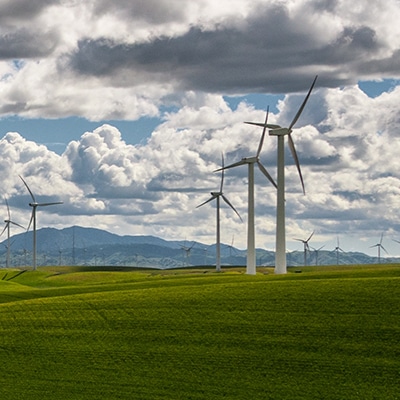As climate science matures, the impact of built spaces on the environment has come under closer scrutiny.
While juggling sustainability and profitability at the same time is a challenge, construction companies can help owners achieve both by implementing green construction principles.
Making it happen comes down to recognizing available resources and rethinking what constitutes positive return on investment.

Harness natural resources with green construction
In a way, green construction is partly an exercise in holistic thinking. Planners should step back to consider:
- What is the building’s role? Who will occupy it and what will they be doing?
- Where will it be located? What characteristics of the property and its environment can be leveraged to make the building more sustainable?
- What effect will the building have on its environment once built? How can any ill effects be reversed into green advantages?
Keeping in mind that owners ultimately need to meet business goals, it’s still worth the added effort and expense to incorporate as many green construction principles as possible. Later, we’ll discuss some of the key long-term benefits of this strategy. First, though, let’s talk through some specific ideas.
The best light in the world is free
Electric lights are getting more efficient, but they still account for between 25% to 45% of a building’s energy use. Granted, even if you’re going green you still need lights. But with some thoughtful design you won’t have to turn them on as much.
The sun is the best light source for pretty much every setting, whether it’s professional, educational, recreational or otherwise. It’s also free. That’s why green buildings are designed to collect as much natural light as possible. Let’s use a large office as an example. Green construction principles turn traditional office design on its head. Large, open areas where employees work in groups are placed adjacent to south-facing walls. That’s the best spot (in the Northern Hemisphere, at least) for the most people to get the most usable light.
Another green construction principle to consider is the types of lights to install. Opting for high-efficiency LED lights will reduce the need to replace lamps. And equipping spaces with motion sensors that only turn on the lights when someone’s nearby dramatically reduces electrical costs. This has become a hallmark of industrial, manufacturing and warehouse construction.
In addition to cost savings and environmental benefits, natural light also makes people happier. That’s a key metric to consider when calculating a building’s sustainable return on investment, which we discuss in more detail later.
The benefits of saving and reclaiming water
Addressing water use and reuse is tricky. Across the commercial, residential and industrial spectrum, water quality is heavily regulated. For almost any application, the water used must be potable. Plus, it’s usually so cheap that owners will pass on water conservation expenditures because they don’t believe they’ll pay off.
But cost savings and environmental benefits can be achieved by applying green construction principles to water use anyway. The easiest strategy to implement is installing high-efficiency fixtures which obviously reduces water costs. In addition, if owners can demonstrate that their building will use less water over the lifespan of the building, they can save money before construction is even finished in the form of reduced sewer tap-in costs.
Reusing water is also possible. In some jurisdictions, on-site water recycling is permitted. The “gray water” that results can be used for landscape irrigation or water features and in some locations for toilet flushing. Some buildings also incorporate rainwater catchment systems for these reasons, and the benefits are many. For one thing, diverting rainwater further relieves pressure on utilities. For another, it’s free. Finally, protecting the most limited natural resource we have scores social points that play a major role in calculating sustainable return on investment.
See more water conservation ideas in this resource from the Whole Building Design Guide.
Material choices can enhance climate control
Thoughtful choice of construction materials creates another opportunity to realize cost savings and environmental benefits.
A good example is the debate over whether pre-cast concrete panel walls are preferable to metal framed structures using steel studs. Some key considerations when making such a decision are:
- Buildings using pre-cast concrete panels require less insulation according to energy codes because they’re thermally superior to metal building materials.
- Pre-cast concrete panels are known as “mass walls” that feature greater thermal mass and thermal lag That means they absorb more heat and better regulate interior temperatures, lowering energy costs.
- Walls with higher thermal mass help keep buildings warmer in winter and cooler in summer compared to metal buildings that have virtually no thermal mass.
Mass walls can be designed with varying thermal mass and thermal lag characteristics so owners can develop HVAC systems and mass wall schemes that complement one another, maximizing occupant comfort and trimming heating and cooling costs.
The Korte Company has mastered a key mass wall installation technique: Tilt-Up concrete construction. It’s a preferred material in many settings because of its strength, durability, speed of construction and environmental friendliness.
Sustainable return on investment
Sustainable return on investment (SROI, also known as social return on investment) combines the familiar hard numbers used to determine classic ROI — like income and expenses— with “softer” data points like environmental impact and social good.
SROI is admittedly hard to calculate because it partly involves quantifying what some believe is un-quantifiable. For instance, SROI involves asking these questions:
- How do you quantify better health?
- How much is improved employee or student morale worth?
- Can you put a price on the social goodwill generated when you slash your carbon footprint?
But grappling with these mysteries often ends up being worth the effort. In an age when owners are more cost-conscious than ever (and when governments are all-in on sustainability), those who can demonstrate high SROI stand to earn very real —and very lucrative— tax rebates and incentives.
To get more acquainted with SROI, this primer can show you how to calculate it. The flow diagram on page 12 of this presentation can help you better visualize the cash and non-cash benefits that combine to create SROI.
Nationwide green construction experience
The Korte Company leads the way in green construction. On dozens of projects across the country, sustainability is built into every Design-Build project we take on.
Here are a few we love to showcase:
Spartan Light Metal Products – Sparta, Illinois
Owners of manufacturing facilities sites are among the most cost-conscious customers we’ve worked with. And it’s for good reason: Margins are razor-thin. Efficient production is the difference between profit and loss.
In addition to building a 92,000-square-foot addition to Spartan Light Metal Products’ facility in southern Illinois, we beefed up the site’s insulation and completed an LED lighting retrofit. That was enough to earn the company a sizeable incentive.
Construction Support Building – Oak Ridge, Tennessee
The Construction Support Building we built at the U.S. Department of Energy’s Uranium Processing Facility in Oak Ridge, Tennessee is a perfect example of how the U.S. government leads the way in green construction.
The 64,800-square-foot structure houses 300 DOE personnel responsible for overseeing subsequent construction work at the Oak Ridge complex. The use of low-VOC paints, ambient light capture, solar panels and geothermic wells earned the site a LEED Gold rating.
What’s more, the green construction principles applied on the job resulted in what the DOE believes will be $2 million in life cycle cost savings.
Dormitory – Cannon Air Force Base, New Mexico
The Korte Company has been a leading Department of Defense construction provider for years. And while the priority on these jobs is always to support the critical missions of our armed services, we implement green construction methods at every opportunity.
We’re especially proud of how it played out at Cannon Air Force Base near Clovis, New Mexico. The 96-room dormitory we built there is a LEED Silver-certified building, incorporating everything from daylighting to thermal mass to natural ventilation.
The Korte Company is at the forefront of green construction
We got our start simply in 1958, when founder Ralph Korte started a company in his hometown focused on quality work and doing right by his customers.
Sixty years and 3,000 construction projects later, we’ve added a little extra to that approach: Doing quality work, doing right by our customers and doing right by our world.
If you’re planning a project and need a hand exploring sustainability opportunities, get in touch with us. And if you want to learn more about you can maximize SROI, read our guide to green construction.
